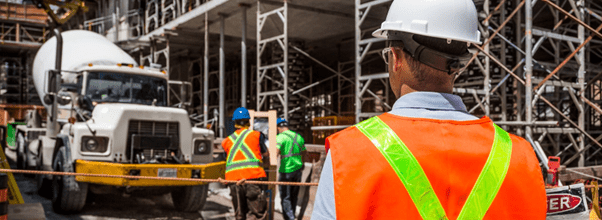In the highly competitive world of construction tenders, effective cost management is necessary for staying ahead. In this article, we’ll explore the significance of cost control. We’ll also discuss various methods and strategies to ensure optimal cost management throughout the project lifecycle life cycle and the tendering process.
Importance of Accurate Construction Cost Management

Accurate cost estimation and budgeting are crucial in winning construction tenders. Precisely assessing material costs, labour expenses, equipment requirements, and other project-related expenditures helps develop a realistic and competitive bid proposal.
Thorough cost estimation enables contractors to both cost estimate and provide competitive pricing while ensuring profitability and avoiding cost overruns during project execution.
8 Methods for Construction Projects’ Cost Control
Contractors can implement several effective methods for construction cost control to enhance their competitiveness and profitability in tenders. These methods help optimise expenses, monitor project costs, and mitigate financial risks. Here are some of them
- Accurate Cost Estimation
Conduct thorough research and analysis to accurately estimate project costs, for example by considering factors like labour, materials, equipment, and overhead when estimating your expenses.
- Effective Budgeting
Develop a comprehensive budget that aligns with the estimates of the estimated costs of future projects and accounts for contingencies, ensuring proper allocation of resources.
- Value Engineering
Identify opportunities for value engineering to optimise cost performance through project design, materials, and construction techniques, achieving cost savings without compromising quality.
- Efficient Project Planning
Create a detailed project plan that outlines tasks, timelines, and resource requirements, enabling better cost management through effective scheduling and for resource planning and budget allocation.
- Regular Cost Monitoring
Implement a system for monitoring and tracking project costs regularly. Compare actual expenditures against the approved budget to identify and address any deviations promptly.
- Vendor Management
Negotiate favourable terms with subcontractors to obtain competitive pricing for materials, equipment, and services, reducing project costs.
- Risk Management
Identify and assess potential risks and uncertainties that could impact project costs. Develop contingency plans and allocate appropriate resources to mitigate risks effectively.
- Technology Adoption
Embrace construction management software, cost tracking tools, and Building Information Modeling (BIM) to streamline processes, enhance communication, and improve cost control measures.
How to Implement Regular Cost Monitoring
Regular cost monitoring is crucial for suppliers to improve profitability. Here’s how it should be implemented
Set Clear Cost-Monitoring Goals
Define what you want to achieve with regular cost monitoring. For example, you may wish to identify cost-saving opportunities or prevent cost overruns.
Establish a Baseline
Gather and analyse historical cost data to establish a baseline for comparison. This baseline will help you identify deviations from the budget and assess the effectiveness of your cost control measures.
Develop a Cost-Monitoring Plan
Create a plan that outlines the cost monitoring process, including who is responsible for monitoring costs, how frequently prices will be reviewed, and what tools and methods will be used to track expenses.
Use Data-Driven Tools
Utilise technology and data-driven tools to track costs in real-time, automate data entry, and analyse trends over time. This will help you identify where prices are trending up or down, enabling you to promptly take corrective action.
Establish a Feedback Loop
Implement a system for collecting feedback from stakeholders on the effectiveness of cost control measures. This feedback will help you identify opportunities for improvement and adjust your cost-monitoring plan accordingly.
Update your Cost Monitoring Plan
Review your cost monitoring plan periodically to ensure it remains relevant and practical. Adjust your strategy based on changes in the market, project requirements, or stakeholder feedback.
Reasons to Optimise Equipment Usage
Efficient equipment usage is a key factor in successful construction projects. Here are some compelling reasons why optimising equipment utilisation is necessary:
Cost Savings
Maximising equipment utilisation reduces the need for additional equipment rentals or purchases, resulting in significant cost savings. By efficiently utilising existing equipment, contractors can minimise expenses and improve profitability across multiple projects.
Enhanced Project Timelines
Optimal equipment usage helps in completing tasks within the scheduled project timelines. Reduced downtime and increased productivity enable faster project progress, leading to timely completion and client satisfaction.
Improved Resource Allocation
Proper coordination and scheduling of equipment ensure that resources are synchronised, avoiding bottlenecks and optimising overall construction project flow.
Increased Productivity
When equipment is used efficiently, it leads to improved productivity. Workers can complete tasks promptly, avoiding delays and optimising their output. This, in turn, positively impacts project progress controlling costs and overall efficiency.
Minimised Maintenance and Repair Costs
Proper equipment usage and maintenance reduce the frequency of breakdowns and repairs. Regular maintenance and adherence to manufacturer guidelines help extend the equipment’s lifespan, minimising downtime and costly repairs.
Safety Enhancement
Optimal equipment utilisation includes adhering to safety protocols and appropriately using equipment. This promotes a safer working environment, reducing the risk of accidents and injuries, and minimising associated costs and delays.
The Pitfalls of Poor Cost Management in Construction
Poor cost management in the construction industry can lead to significant challenges and adverse outcomes. Here are some of them
Lack of procurement strategy
Inadequate procurement strategies can lead to unfavourable terms with suppliers and subcontractors, resulting in higher material and service costs. Poor negotiation practices may also lead to missed opportunities for cost savings.
Change order mismanagement
Poor handling of change orders can disrupt project schedules, increase costs, and strain client relationships. Inefficient change order management can lead to delays, disputes, and additional expenses that impact project profitability.
Failure to Identify and Manage Risks
Inadequate risk assessment and the cost management process can lead to cost escalations due to unforeseen events or issues. Failure to plan for contingencies and mitigate risks can result in project delays, budget overruns, and compromised outcomes.
Lack of Technology Adoption
It is necessary to leverage construction management software, cost-tracking tools, and digital solutions to ensure effective construction cost management. Embracing technology allows for streamlined processes, accurate data tracking, and improved decision-making to optimise cost control.
Takeaway
When managing construction tender costs, it’s crucial to have effective strategies in place. Accurate estimation, thorough research, and comprehensive budgeting play a vital role.
Methods like value engineering, regular budgets, cost monitoring, and embracing technology can give you a competitive edge. By leveraging technology, you can enhance cost control and overall project efficiency.
Start winning construction tenders today for FREE by registering with Supply2Gov.


